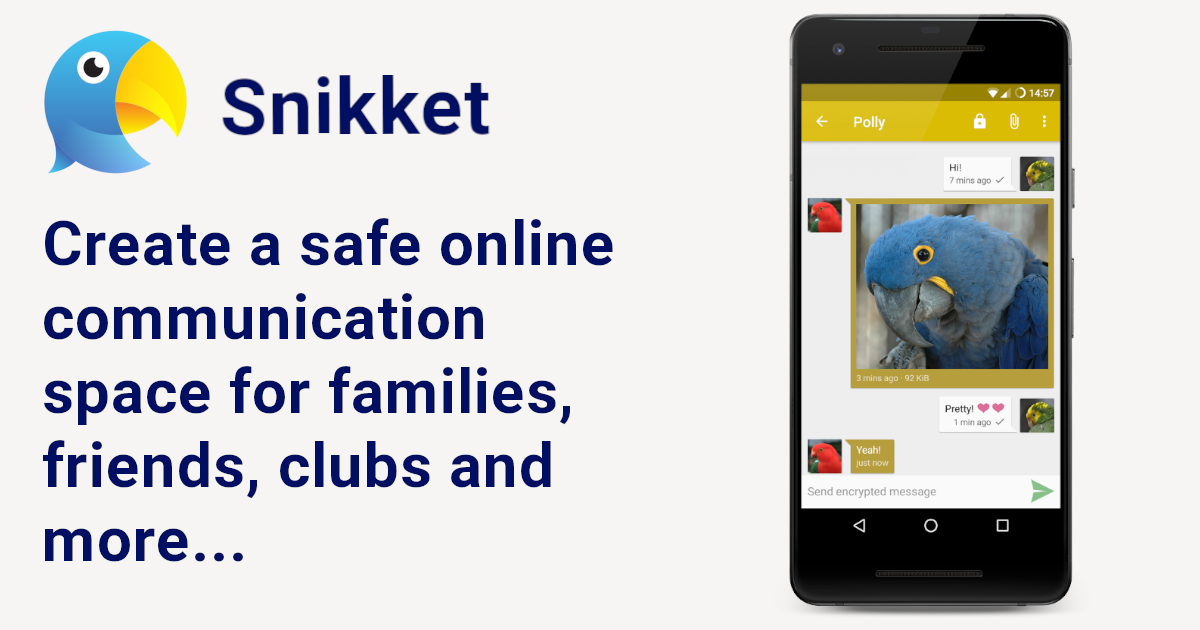- cross-posted to:
- [email protected]
- cross-posted to:
- [email protected]
For self-hosting though, the project I work on - Snikket - uses XMPP but has all the nice modern things you’d expect ready to go right out of the box, more like a Matrix (Synapse/Element) setup. Probably the biggest thing missing for Snikket right now is an official web app (we currently have Android and iOS apps).
My personal feeling is that if you’re looking for something a bit more extensive, “team chat” style (such as Discord, Slack, that kind of thing), you’re better served by Element right now. However if you’re looking for something lightweight and simple for personal messaging in a group of family/friends (e.g. to replace WhatsApp/Telegram/Signal) then XMPP via Snikket is a great choice.
- The above is copied from someone else. Anyone have any experience running this for family / friends?
Tested Snikket self-hosting in the past. If I recall correctly one advantage was that it has the option for admins to create invite links for on-boarding new users which seems useful to me for “normies”.
I wonder how does this differ from plain XMPP? There are tons of XMPP clients for every imaginable device, includong browser ones.
This is one-click install, easier for beginners / non-tech people.
Yeah, I get that. But since it’s (basically) XMPP, can’t it be used with such as Converse.js?
It has a very opinionated default configuration and many of the relevant settings are hard-coded in the containers and thus are not easy to change permanently.
It’s probably possible to get working with ConverseJS, but I think it is better to wait for an officially supported web-client to be added to Snikket or alternatively configure your own XMPP server without the ready made Snikket containers.
What settings presented most trouble to you, just curious?
Its not specific settings but the overall setup that is not intended to be modified.
I installed it with a caddy proxy, works like a charm. I’ve used the Converse.js web client, Modal on iOS and Conversations for Android. The installation was quick and easy, file and photo sharing works, audio and video calls.
Really the hardest part is getting friends to use it.
Acronyms, initialisms, abbreviations, contractions, and other phrases which expand to something larger, that I’ve seen in this thread:
Fewer Letters More Letters HTTP Hypertext Transfer Protocol, the Web SSL Secure Sockets Layer, for transparent encryption VPS Virtual Private Server (opposed to shared hosting) XMPP Extensible Messaging and Presence Protocol (‘Jabber’) for open instant messaging
4 acronyms in this thread; the most compressed thread commented on today has 14 acronyms.
[Thread #717 for this sub, first seen 27th Apr 2024, 18:05] [FAQ] [Full list] [Contact] [Source code]
I’ve tried to install it on my VPS behind Traefik but couldn’t get it working. ¯\_(ツ)_/¯
XMPP doesn’t use HTTP for the most part, so Traefik isn’t going to work. Just open the right ports in your firewall.
I know, bit Snikket still uses ports 80/443 for its web interface and group file sharing service. It even has a page for Reverse Proxy configuration, but it doesn’t include Traefik and the configuration is non-trivial
While I like it conceptually, the two times I tried to install it I felt it was far too opinionated for me to get it to work correctly, like other software “bundles” of its kind that want to take control of the entire process of setting up ports, networking, storage, certificates etc…, instead of just hanging down from stuff that I have already prepared for it (like my own domain with my own cert).
Like, as a piece of software it’s something I’d absolutely use… if someone else sets everything up for me.
I thought you could install as a docker container?
You can, but honestly no idea how to handle stuff like the certs from that point on. Most other software on docker lets me eg.: just bind-mount the host’s directory with the certs I want to use - or just not even know about SSL in the first place and just let me reverse-proxy the access in (like, say, a simple static page web server).
But, like I said, the last times I tried to get into it, it tried its darnest to get in my way. If that’s changed since then, that’d be great.
There is a docker container setup with automatic lets encrypt and proxy. Can search around for it.
Hmmm maybe that’s the one that tries to do everything on its own instead of using the stuff I’ve already set up. Had similar issues with eg.: Nextcloud.
I’ve been looking for an alternative “the actual XMPP service only, nothing else that can be sourced by the host” container setup but there doesn’t seem to be any.
deleted by creator





